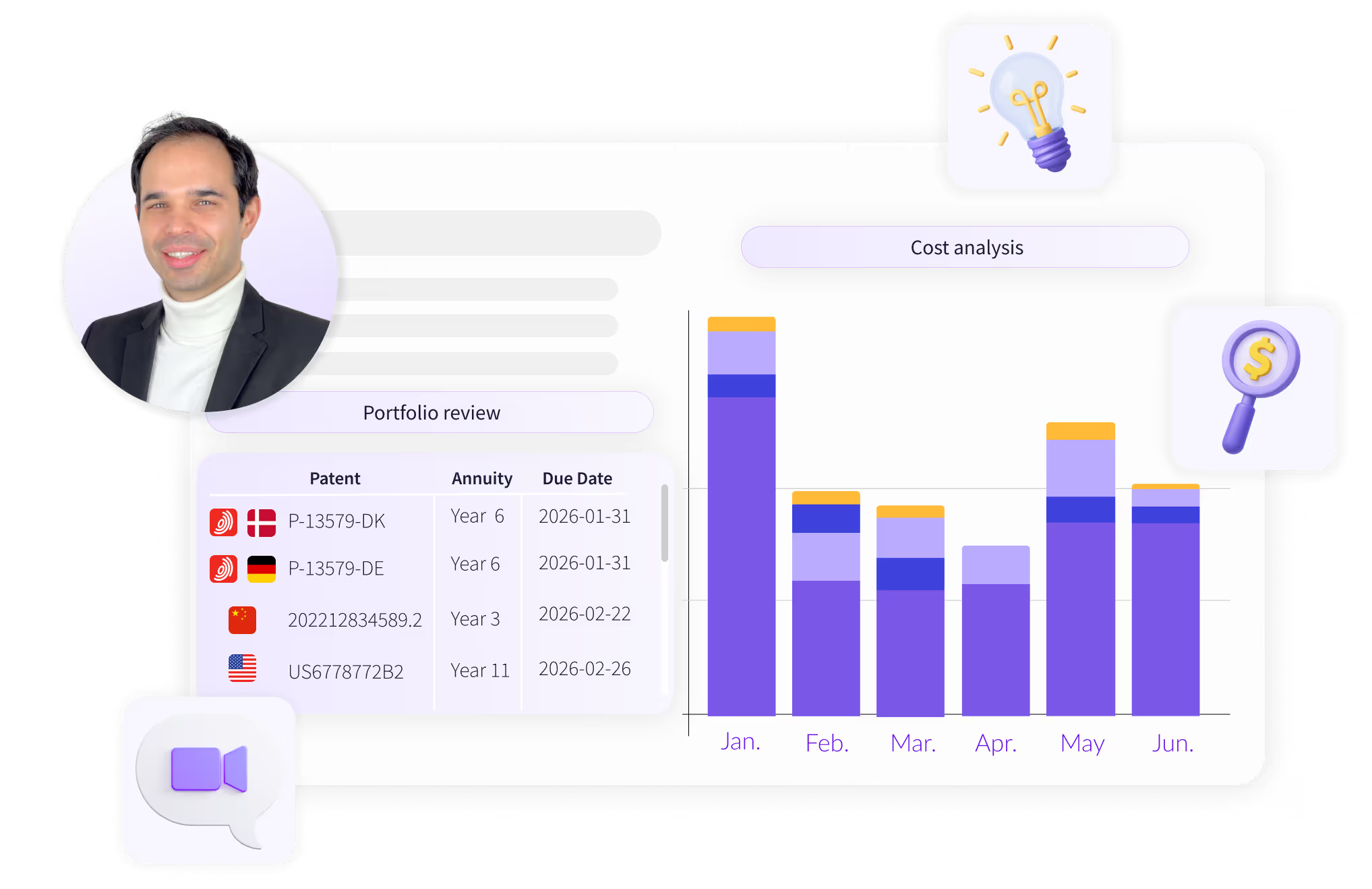TRY OUR NEW (FREE) IP RENEWAL COST CALCULATOR
Calculate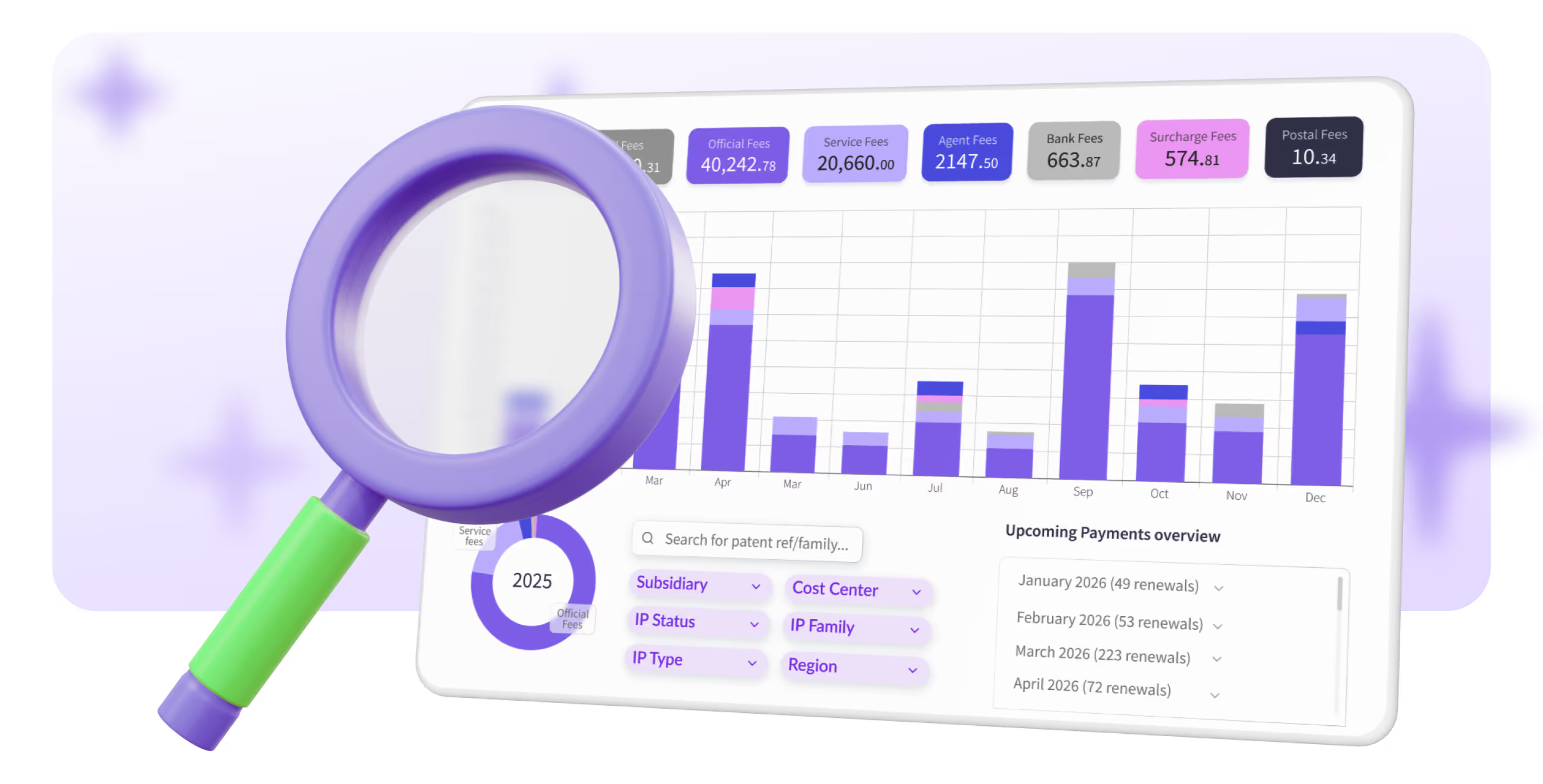
.avif)
Patent claims are the legal heart of any granted patent. They define what is protected and what isn't. Without them, there’s no clear boundary to stop others from copying your invention.
For patent holders, understanding patent claims is essential not only for protecting innovation but also for making informed decisions about their intellectual property.
Claims impact patent value, enforceability, and ultimately whether your invention is worth the patent renewal procedure year after year.
A patent claims is the part of a patent application that legally defines the invention.
It describes, in one sentence, the specific features the inventor wants to protect, essentially drawing a legal boundary around the invention.
These claims are what determine whether someone is infringing on your rights, and they form the basis of both protection and enforcement.
Every patent claim performs two vital functions:
Once the patent is granted, the claims are published, creating legal clarity. This is especially important in patent disputes, where infringement is judged by comparing the competitor’s product or process directly to the wording of the claim.
Think of a patent claim as the equivalent of a land deed, it outlines the boundaries of your legal ownership.
If someone “trespasses” into this defined scope, it could be grounds for enforcement. Claims are also central to evaluating validity and resolving legal challenges.
Patent claims are typically drafted at the time of filing the patent application, after the invention has been described in detail and any supporting drawings or data have been prepared.
Patent offices around the world, including the USPTO and EPO, require every patent application to include at least one claim. The claim must be written as a single sentence and follow a standard format to ensure clarity and legal consistency.
A well-drafted patent claim follows a defined structure made up of three parts:
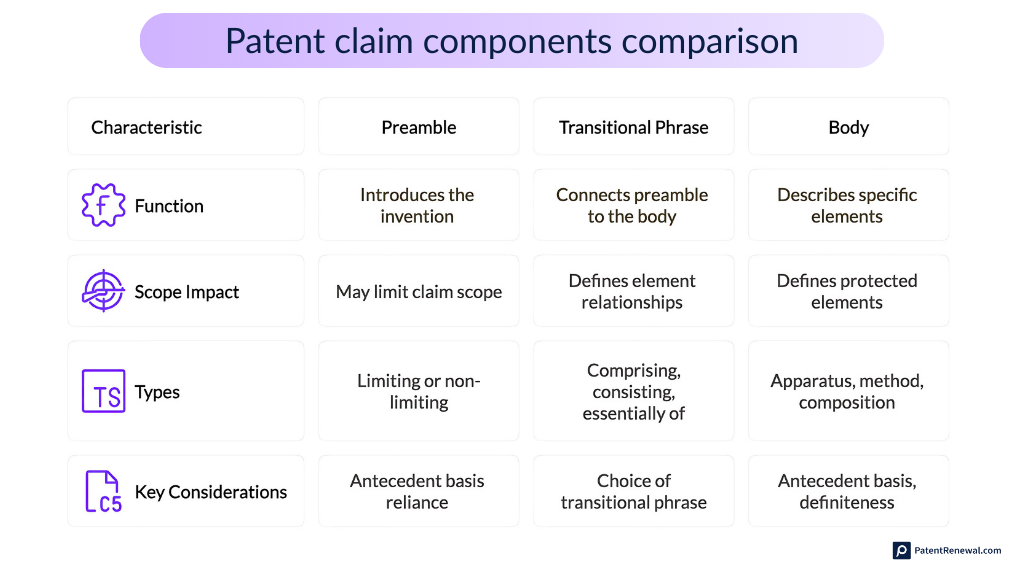
Drafting the claim with clarity at each stage is key to avoiding litigation, reducing examination delays, and protecting the long-term value of your patent.
When drafting a patent application, it's important to tailor your claims to the invention; you don’t just choose a type at random. However, in most jurisdictions, you can and often should combine multiple claim types in one application to create layered protection.
For example, a patent may include:
Patent claims can be categorized by how they are structured in the application:

Each type serves a different purpose, and combining them allows the applicant to cover variations of the invention while complying with local rules.
Different inventions require different claim formats, depending on their nature and the patent system’s legal requirements:
Most of these must match the invention type. You cannot use a Swiss-type format for a mechanical tool, for example. Markush and Jepson claims can be combined with other utility patent claims when relevant.
Here, the focus is on what the invention actually is:
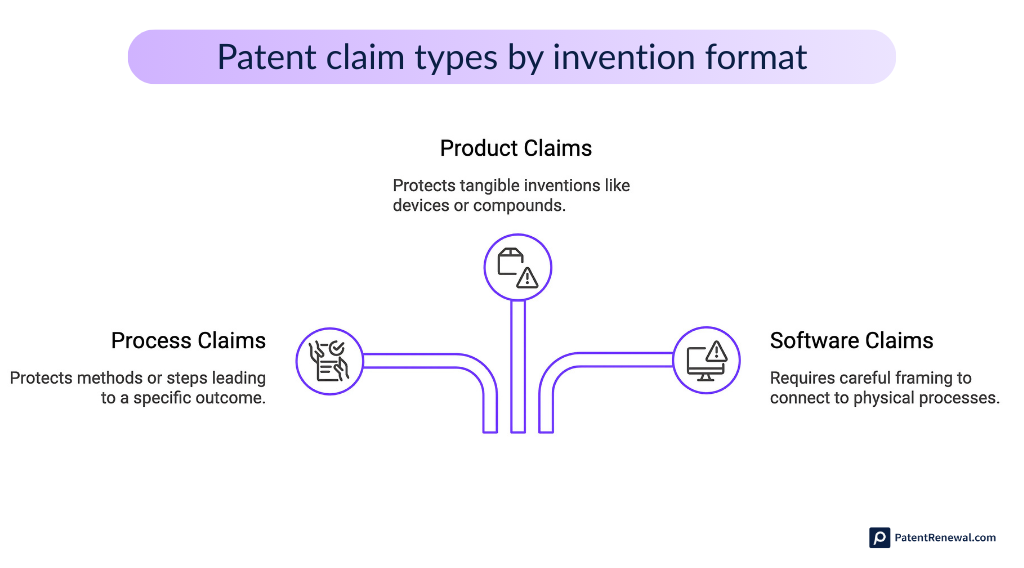
You can draft both a product and a process claim in the same application if your invention includes both.
A key precedent is the Alice Corp v. CLS Bank case, where the U.S. Supreme Court invalidated software patents for implementing abstract ideas on a computer. The case resulted in the Mayo Framework, which is a two-step test for software patent eligibility:
If the answer is yes to both, the software-related invention may be patentable.
Some inventions are better described by structure or function:
This format can broaden protection but also adds complexity during examination and enforcement.
Choosing the right type of claim is just the beginning. To make your patent easy to approve, enforce, and maintain, you also need to follow legal and technical standards used by major patent offices like the USPTO, EPO, and WIPO (PCT).
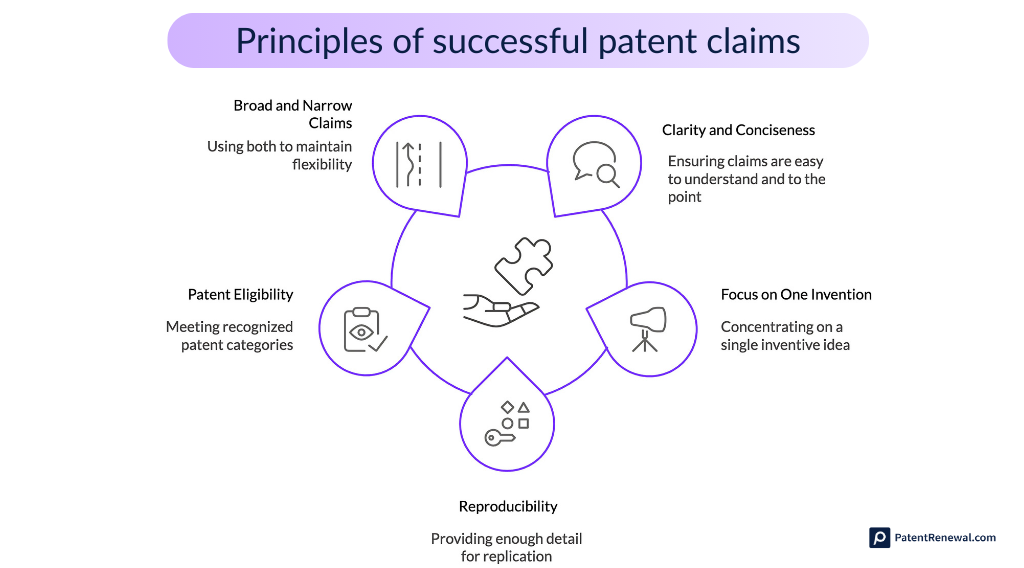
Here are the key principles that help you draft claims with long-term value.
Each patent claim has to describe the invention in a single sentence, and it should do so clearly. Based on USPTO and WIPO guidelines, make sure your claim is:
Avoid words like “fast,” “thin,” or “efficient” unless you’ve explained exactly what that means in your patent. Examiners may reject unclear claims, and if it’s not precise, it may not hold up in court.
Patent offices like the EPO and PCT expect all the claims in one application to focus on a single inventive idea. If your claims drift into unrelated areas, the examiner can raise a unity objection.
If that happens, you'll need to either rewrite your claims or split your application into separate filings, which adds time, cost, and more complexity to your intellectual property renewal plan.
The claim needs to give someone in your field enough information to replicate the invention without having to guess or experiment too much. That’s known as the enablement requirement.
This is especially important for broad claims, like those that cover a group of materials or product variations. Without enough examples or technical details, the claim might get rejected or challenged later on.
Not everything can be patented. Patent offices will only consider claims that fall into a recognized category, like a process, machine, manufacture, or composition of matter.
They’ll reject claims that try to protect:
If your invention involves software, AI, or medical diagnostics, most jurisdictions will also require you to show that it includes a practical application or an inventive technical contribution.
The best patent applications use both:
Even well-structured claims can run into trouble if certain details are overlooked. We’ve gathered the most common and important mistakes to avoid when drafting patent claims that could weaken your patent or slow down the approval process:
While patent claims are crucial during patent application and litigation, they also play a big role during the lifetime of a patent, especially during patent renewal.
Claims determine how valuable a patent remains over time. A strong claim can protect a commercialized product, deterring infringement and justifying the cost of patent renewal. On the other hand, vague or overly narrow claims can leave a patent legally weak, making patent renewal questionable in later years.
For global patent holders managing dozens or even hundreds of assets, understanding claim strength helps prioritize which patents to keep and which to let lapse.
Patent claims aren’t just paperwork, they define your legal advantage. If you're a patent holder or part of an IP team, reviewing the structure and strategy behind your whole IP portfolio is just as important.
At PatentRenewal.com, we specialize in simplifying the most complex part of patent ownership: managing patent renewals globally. Our intuitive platform handles patent renewal for patents, trademarks, designs, and utility models while helping patent holders cut annual patent renewal costs by up to 50%.
If you're looking for a smarter way to handle your intellectual property renewals, we’re here to help, without disrupting your already trusted legal partnerships.
Interested in a free IP renewal consultation? Benchmark your current IP renewal setup and costs against market standards.
